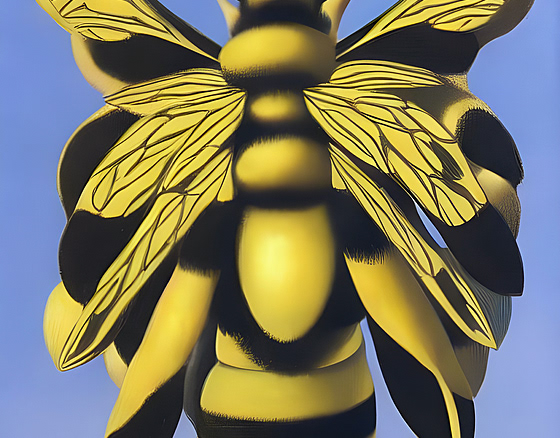Jack: A Surreal Exploration of Identity and Belonging
Bob Orsillo's "Jack" is a captivating and enigmatic piece of surreal art that invites viewers to delve into its depths and unravel its hidden meanings. This painting, with its stark juxtaposition of a human figure and a pumpkin head, evokes a sense of mystery, alienation, and the blurred lines between identity and appearance.
At the heart of the painting is a young boy, his face obscured by a large, green pumpkin head. The pumpkin, with its carved features and toothy grin, is a classic symbol of Halloween, a holiday associated with masks, disguise, and the supernatural. This incongruous pairing of a human figure with a monstrous mask creates a sense of unease and disorientation.
The boy's body, clad in a dark suit and a white collar, suggests a desire to conform to societal norms and expectations. However, the pumpkin head, a symbol of individuality and eccentricity, challenges this desire for conformity. This tension between conformity and individuality is a central theme of the painting.
The background of the painting is dominated by a cluster of orange pumpkins, their bright colors contrasting with the darker tones of the figure. These pumpkins, with their carved faces and playful expressions, create a sense of festivity and joy. However, the figure's solitary presence and masked identity suggest a sense of isolation and alienation.
Interpretation and Symbolism
"Jack" can be interpreted on multiple levels. On a surface level, the painting may be seen as a commentary on the pressures of conformity and the desire to fit in. The figure's masked identity suggests that we often hide our true selves behind social roles and expectations.
On a deeper level, the painting may be exploring the theme of identity and belonging. The pumpkin head, a symbol of individuality and eccentricity, challenges the notion of a fixed and stable identity. The figure's solitary presence, surrounded by a crowd of pumpkins, suggests a sense of loneliness and the difficulty of finding one's place in the world.
Orsillo's Surrealist Approach
"Jack" exemplifies Bob Orsillo's signature surrealist style. Surrealism, a 20th-century artistic movement, aimed to tap into the unconscious mind and explore the irrational and dreamlike aspects of human experience. Orsillo's painting employs several surrealist techniques, including the juxtaposition of unrelated objects, the use of symbolic imagery, and the creation of a dreamlike atmosphere.
By combining these elements, Orsillo creates a visually striking and thought-provoking artwork that challenges our conventional understanding of reality and invites us to explore the depths of our own subconscious. "Jack" is a powerful reminder of the human capacity for self-discovery and the importance of embracing our individuality.
In Conclusion
Bob Orsillo's "Jack" is a masterpiece of surreal art that continues to captivate and inspire viewers. The painting's enigmatic imagery and dreamlike atmosphere invite us to delve into the depths of the human psyche and explore the hidden meanings that lie beneath the surface. Through his masterful use of surrealist techniques, Orsillo has created a timeless artwork that will continue to resonate with audiences for generations to come.
Additional Points to Consider
The painting's use of color is significant. The contrast between the warm orange of the pumpkins and the cool green of the pumpkin head creates a sense of tension and unease.
The figure's posture is rigid and formal, suggesting a sense of restraint and control.
The painting's overall mood is one of mystery and introspection, inviting the viewer to speculate on the figure's identity and motivations.
I hope this essay provides a comprehensive analysis of Bob Orsillo's "Jack." It is a powerful and thought-provoking artwork that deserves to be studied and appreciated.










